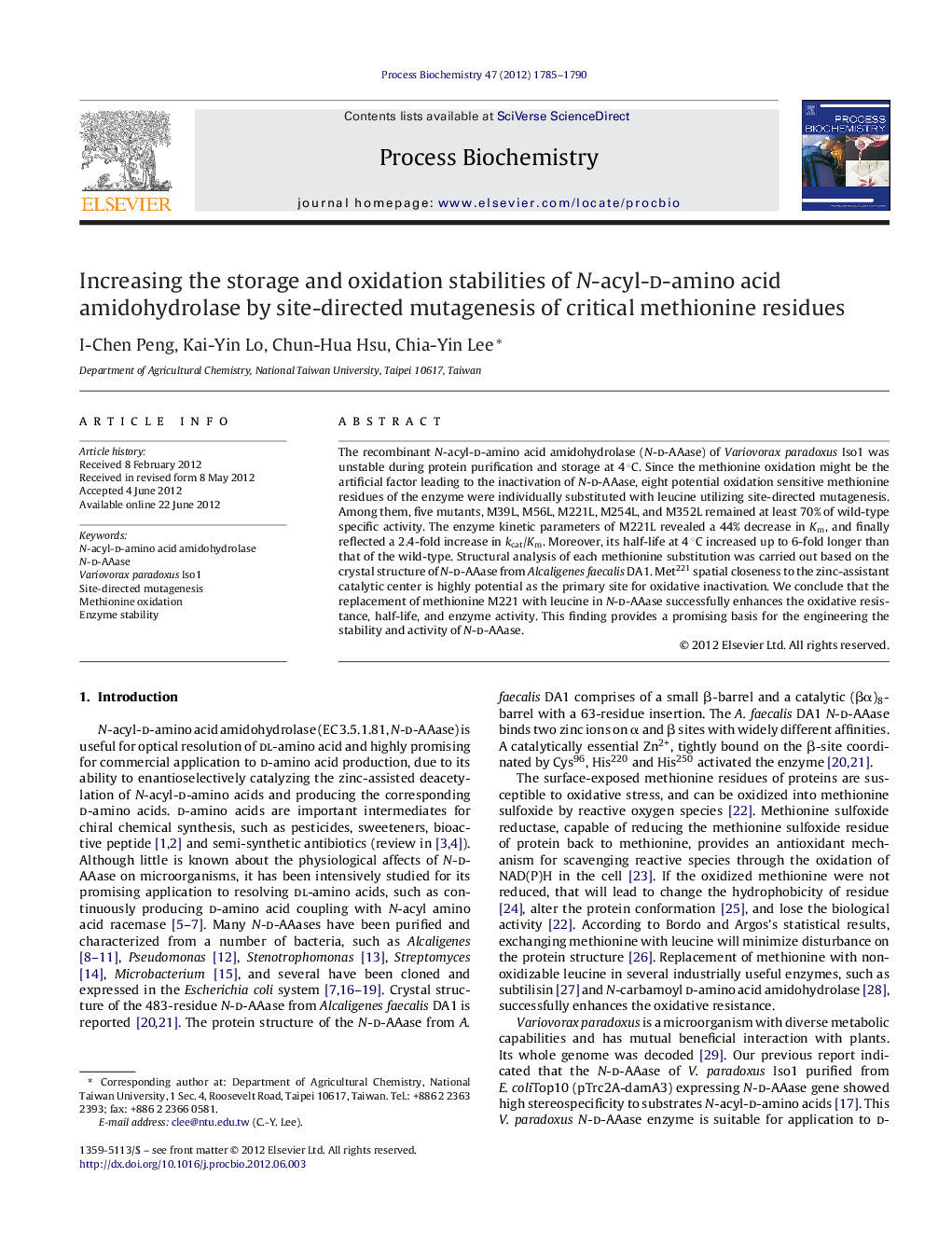| Article ID | Journal | Published Year | Pages | File Type |
|---|---|---|---|---|
| 10235506 | Process Biochemistry | 2012 | 6 Pages |
Abstract
The recombinant N-acyl-d-amino acid amidohydrolase (N-d-AAase) of Variovorax paradoxus Iso1 was unstable during protein purification and storage at 4 °C. Since the methionine oxidation might be the artificial factor leading to the inactivation of N-d-AAase, eight potential oxidation sensitive methionine residues of the enzyme were individually substituted with leucine utilizing site-directed mutagenesis. Among them, five mutants, M39L, M56L, M221L, M254L, and M352L remained at least 70% of wild-type specific activity. The enzyme kinetic parameters of M221L revealed a 44% decrease in Km, and finally reflected a 2.4-fold increase in kcat/Km. Moreover, its half-life at 4 °C increased up to 6-fold longer than that of the wild-type. Structural analysis of each methionine substitution was carried out based on the crystal structure of N-d-AAase from Alcaligenes faecalis DA1. Met221 spatial closeness to the zinc-assistant catalytic center is highly potential as the primary site for oxidative inactivation. We conclude that the replacement of methionine M221 with leucine in N-d-AAase successfully enhances the oxidative resistance, half-life, and enzyme activity. This finding provides a promising basis for the engineering the stability and activity of N-d-AAase.
Related Topics
Physical Sciences and Engineering
Chemical Engineering
Bioengineering
Authors
I-Chen Peng, Kai-Yin Lo, Chun-Hua Hsu, Chia-Yin Lee,
